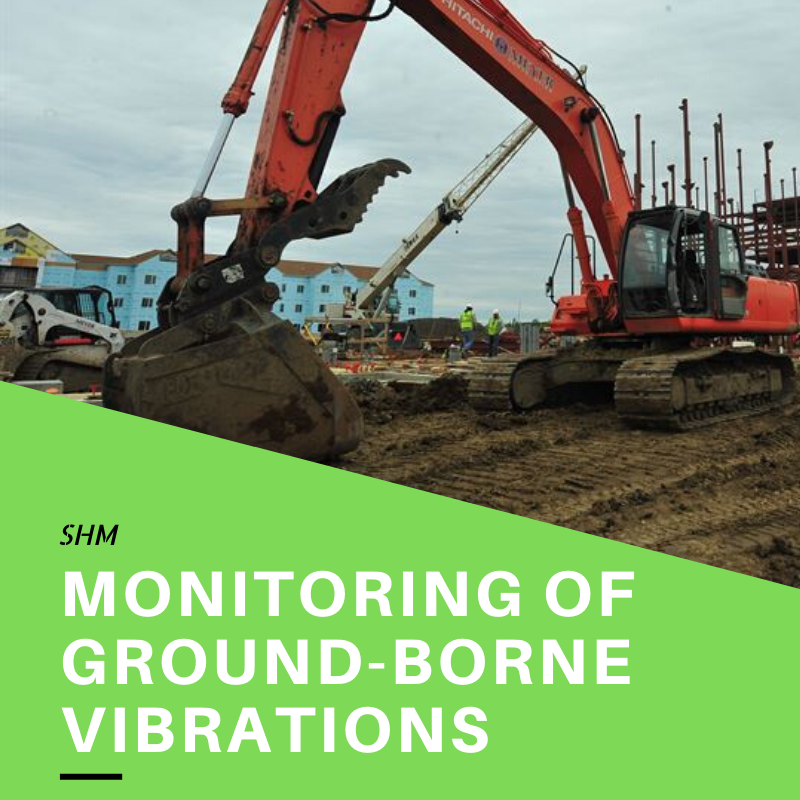Load testing is a common practice among bridge engineers for the assessment of bridge safety and serviceability. Diagnostic load testing is one type of load test methods that can be used either as a means for estimating the load carrying capacity of an in-service bridge or as an acceptance test before the bridge is put into service [Olaszek et al, 2014]. This article provides a quick review to Diagnostic Load Testing of Bridges and its application to bridge condition assessment.
Diagnostic Load Testing
Diagnostic Load Tests can be used to evaluate specific response characteristics of the bridge such as lateral load distribution and secondary stiffening effects and to validate the load rating analytical models. Diagnostic load testing usually involves installation of a variety of sensors, including:
- strain gauges,
- acceleration sensors,
- displacement sensors,
- and highly sensitive rotation devices.
Sensors are normally installed on structural components. The test is generally performed with controlled load situations. Applied loads are typically limited to legal load levels or load levels that are known to be safe for a particular structure (historical data). The main goal of the diagnostic load testing of bridges is to identify structural response (deformations, strains, etc.) for a given load condition. The measured responses are compared with those that are derived from the analysis of the theoretical models, for the same loading condition. Head to head comparison is then used as the basis for validating the theoretical model and defining how accurately the model simulates actual load paths [Santini Bell et al, 2013; Shahsavari et al, 2019]. The field portion of diagnostic load tests can be executed with low-cost because they can be done quickly and with minimal impact on traffic. The load testing vehicle is typically a legally loaded dump-truck and the instrumentation is installed in temporary fashion which can usually be installed in a day with a small crew. Actual tests are conducted with brief road closures or moving blockades to minimize conflicts with the traveling public.
Diagnostic Load Testing for Structural Model Calibration
The ability to calibrate a structural model is the primary concept behind diagnostic load testing. The basis of comparison can be static and/or dynamic structural responses generated by a known loading condition. Static measurements are often global responses such as midspan displacement and girder rotation at an abutment or local member cross-section responses such as axial or flexural deformation obtained from strain measurements. Dynamic measurements usually consist of acceleration, which are further processed to generate structural mode shapes and natural frequencies. The calibration of the Finite Element (FE) models using the monitoring data helps reduce possible errors induced by simplifications or inaccurate assumptions made in model development. Wrong assumptions are mostly due to insufficient knowledge about structural details, materials properties, inevitable simplifications of the details or ignorance of the non-structural components, and boundary conditions. In the model calibration procedure, prior to refining the wrong assumptions made in the model developments, it is essential to determine the important parameters causing a deviant response in the model. The refinement attempts are required to change the recognized influential parameters and minimize the errors until the desired accuracy is achieved. Performing load tests with moving loads can be very efficient and minimize impact on traffic, but it requires that truck position be monitored and recorded along with all the structural responses. The key part of diagnostic load testing is an apples-to-apples comparison of data. This requires a convenient method for extracting field data for specific truck positions corresponding to the simulated load cases from the model. The procedure is based on direct comparison of responses for many sensor locations and many different load cases. The load test results are a series of response histories as a function of load position.
Relative Services to Bridge Condition Assessment
When a bridge experiences an unexpected occurrence of accidental events, such as truck accident, a major concern for bridge managers is effective and informed operational decision-making with respect to the remaining capacity of the bridge. Given the load rating reduction estimated by the bridge analytical model, an integrated decision-making protocol combining different approaches will be beneficial to bridge managers for making decisions on the damaged (pre-repair) state of the structure with respect to different damage scenarios. A calibrated structural model helps establish a baseline to determine the structural system response for performance prediction and investigate the bridge decreased load carrying capacity under different damage scenarios [Shahsavari et al, 2020]. Monitoring a bridge’s structural response has the potential to:
- detect the presence of structural changes for condition assessment,
- inform the bridge manger to assist in daily operational decision-making,
- validate the structural design assumptions,
- refine a structural model of the bridge to be used for performance prediction [Read More].
Concluding Remarks
Unlike conventional load test practices which have the potential to induce damage into bridge components (e.g., PS/C girders) and reduce its serviceability, diagnostic load testing of bridges appears to be promising for determining the bridge maximum safe load capacity through analytical investigations. The structural models calibrated through controlled load tests would be beneficial for operational decisions such as those relating to maintenance scheduling and overweight vehicle permitting. Diagnostic load testing would measure structural performance at the applied test loads but not provide any indication as to how the bridge would behave at higher loads or what the effective factor of safety would be for legal post loads. Creating a calibrated structural model that can predict the impact of operational and environmental variations on bridge performance provides support for better management strategies such as fatigue performance prediction, load rating deterioration and real-time condition assessment. To obtain a realistic capacity, an alternative approach would be a combination of diagnostic and traditional load testing procedures in such a way that loading a bridge up to its serviceability limit without inducing any damage to the structure or cause any reduction to service life. The use of Structural Health Monitoring (SHM) sensors being deployed at critical locations may be warranted to examine bridge performance over time. The measured parameters include, but not limited to, changes in stress in critical regions, changes in deflection, identification of crack activity, etc.






Taylor Hicken
I appreciated it when you shared that structural components are being installed with sensors in order to understand the load levels that are safe for the particular structure. It is important to make sure that it is able to withstand certain loads without collapsing. I would like to think if a company is thinking of building a bridge, it should look for a reliable service that can offer sensors to ensure the safety level of weight.
토토
Excellent site you have got here.. It’s difficult to find high quality writing like yours nowadays. I truly appreciate people like you! Take care!!